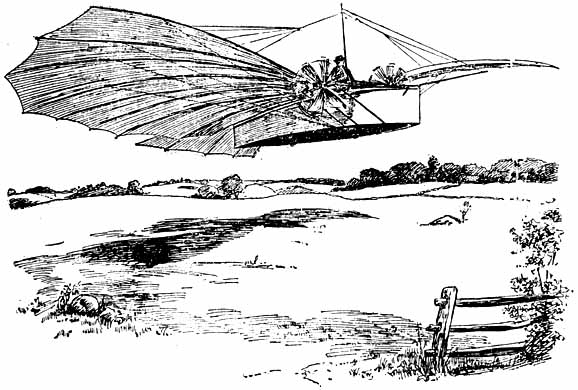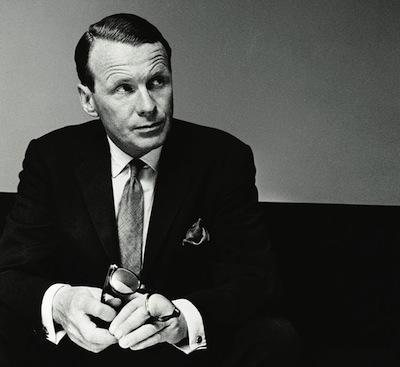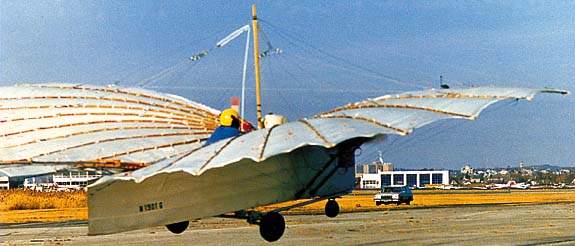If I asked you this question: Who was the first person (or people) to ever fly?
What would your answer be?
You’d probably answer, “The Wright brothers!”
And then you’d raise your hand, waiting for me to high-five you and congratulate you on your amazing grasp of historical events.
That’s why you’d be surprised if I didn’t high-five you and congratulate you, but instead crossed my arms and answered, “Maybe.”
You’ve probably heard about how important images are in social media.
If you haven’t, look at these four different stats on visual content marketing:
- A survey from Adobe and Software Advice revealed that using images and photos is the most important tactic for optimizing content for social media, followed by using hashtags and usernames and targeting specific people.
- Buffer App tested using images with Twitter and found that their tweets that included images got 18% more clicks than those without images.
- The CMO Council, in partnership with Libris, conducted a study of 177 marketing leaders in the second quarter of 2015. Their finding revealed that the majority believe that the importance and use of visual assets will only grow in the future. (NOTE: Link leads to .PDF)
- And you know I can’t use stats about the importance of using images in your content without using an image!
![:)]() Here’s one final stat on the importance of images from MGD Advertising…
Here’s one final stat on the importance of images from MGD Advertising…

Source: MGD Advertising
Before we go any further, let me be clear.
I am not here to debunk those stats. I believe them and I am personally using images in my content more than ever.
But what I want to do today is show you the importance of using images for a completely different reason than engagement.
Today I want to show the importance of using images for an important, but often overlooked reason: for proof.
I’ll explain more in just a minute.
But first, let me tell you the story of the person who some believe was the real first person to fly.
And if you pay close attention to this person’s story, you’ll see why using images in your content is so critical.
The Real First Person to Fly?
The Wright brothers first recorded flight was in 1903.
But the reason we know that they actually flew isn’t just because they said they did and had witnesses to confirm the story.
We know that they actually flew, because a photographer was there and took a picture of the event. (That’s the image at the beginning of this post.)
What you might not know is that a man named Gustave Whitehead claimed that he successfully flew his own powered machine that he named “Number 21” in 1901 – two years before the Wright brothers.
In fact, Whitehead claimed to not have just flown his machine once, but several times in 1901 and 1902.
You might be thinking: Why should we believe him? What other proof is there for his claims?
Well, here are two good reasons we should believe him:
- A newspaper reporter witnessed the event and wrote about it
The event reportedly took place in Fairfield, Connecticut on August 14, 1901. It was described later in an article that appeared in the Bridgeport Herald newspaper on August 18, 1901. The reporter said that he saw Whitehead fly his aircraft and said that Whitehead flew for about half a mile, reached a height of 50 feet, and then landed safely. - There were three other witnesses
The Bridgeport Herald reporter said that Whitehead and another man drove to the testing area in the machine. (Number 21 supposedly could be driven like a car when the wings were folded along its sides.) The reporter also said the he and two other people followed them on bicycles to the place in Fairfield.
So you’re probably wondering…
“Wait a minute. If there was all of this proof, then why have I never read about this in the history books? Why was I told that the Wright brothers were the first to fly?”
Well, that’s where our lesson about the importance of using images for visual proof comes in.
Keep reading and you’ll see what I mean…
The Proof is in the Photo
Some say the reason that you never heard of Whitehead and the reason that you were told that the Wright brothers were the first to fly is because they had better proof.
What do I mean?
You see, on that day in August 1901, when Whitehead flew “Number 21” 50 feet high for half a mile, the only proof that the Bridgeport Herald gave was this illustration…
This illustration was supposedly based off of a photo, but the photo went missing and couldn’t be used to prove the flight.
So there wasn’t some conspiracy to keep you from knowing about Whitehead.
The photo of the Wright brothers’ first flight was all the proof that people needed to believe that they really did it, so they were declared the first to fly.
(Many people today still debate whether it was the Wright brothers or Whitehead who were the first to fly.)
Gustave Whitehead’s Hard-Earned Lesson on the Importance of Visual Proof
Can you imagine how bad Whitehead must have felt to be the first to fly, but not have any proof besides his words (and the words of a few others)?
That would be beyond frustrating!
You don’t want to experience the same frustration when you are creating content with the purpose of proving something.
The Main Lesson: Images Reinforce Facts
What is the main lesson we can learn from Whitehead? It’s this…
If you are creating content that is intended to prove something to a prospect, then never rely solely on your words or even the testimony of others.
Whenever possible, use images to reinforce your words. Powerful words, stories, and social proof are important, but images help “seal the deal”.
Images plant your words firmly in the concrete world of reality.
They help convince (and silence) the doubters who rebelliously declare, “I’ll believe it when I see it!”
Proof That Images Really Are Influential
If you think this is just a nice idea that I came up with, then you’ll want to keep reading. I have some powerful proof for you.
1. The Power of a Photograph’s Testimony
Paul Messaris, who is a professor and a prominent researcher in the area of visual communication and digital media, say this in his book, Visual Persuasion: The Role of Images in Advertising…
“…photographic images traditionally have been taken as proof that the scenes contained within them really did occur as shown. In much the same way that a fingerprint or footprint testifies to the existence of the person who left it, a photograph can be seen as testifying to the reality of the situation it records.”
But that’s not all. Psychologists have something to say about this too.
2. Psychological Proof of the Power of Pictures
Harry Gardiner, Social Media Executive at Koozai, said that there is psychological proof that images help you prove a point…
“Psychologists found that adding pictures to back up what they were saying made people more inclined to believe them.”
And finally, if I am going to practice what I preach, then I better use an image to back up my words and establish proof.
3. An Image that Proves the Power of Images
Basecamp began to test using large photos of their customers on their landing pages. And do you see the results? Jamie Dihiansan explained their tests in this way…
The Person Page was far shorter. There was less information about Highrise. However it had a 47% percent increase in paid signups than the Long Form design.
After their tests, they came to this conclusion: Big photos of smiling customers work.
Did you see? It was the photo/image that made the content more convincing and persuasive.
Advice From a Legend in Advertising
Does this mean that you should always assume that adding an image as proof will be the end-all, be-all solution for improving the impact of your proof-based content marketing?
In many cases, adding an image will be your best bet for improving the strength of any content marketing used to establish proof. The evidence I gave you above should make that clear.
But you should always test your results.
What advertising legend David Ogilvy said about advertising is true about content marketing….
“Never stop testing, and your advertising will never stop improving.”
Whitehead’s Redemption
In the mid 1980’s a guy named Andy Kosch formed the group “Hangar 21” with the purpose of proving that Whitehead’s “Number 21” really did fly.
He led a team in the construction of a reproduction of the craft. To create the plans, original Whitehead photos were found and studied.
On December 29, 1986, Kosch and his team brought their replica, dubbed “21B”, to an airstrip to see if it would fly.
And what was the result? To their joy and amazement, they made 20 flights and reached a maximum distance of 330 ft.
Gustave Whitehead would’ve been so proud!
Did you notice how the above picture gave the words of this final story more validity and impact?
Well, as you and your team work to create visual content marketing and use more images within your overall content, never forget that it’s not just a way to increase your engagement
If you use the right visuals in your content, then it will also increase its influence.
If You Liked This Post…
If you liked this post, then you might want to:
- Do you live on the San Francisco Peninsula and would like to hear me speak? I’ll be speaking at a Meetup group for San Mateo B2B Bloggers. Click here to learn more.
- Hire me to come speak about this topic (or another topic)
- Read my last post: The ABC News Report That Was Secretly Content Marketing
- Subscribe to this blog, so you don’t miss the next post!
- Read my last series of posts on the power of serialized content here: How Content Marketers Can Use a Literary Technique That Made Charles Dickens Famous
- Learn why your content marketing isn’t working here
- Read my book: 51 Content Marketing Hacks
- Hire me to help you to create and implement a successful content marketing strategy for your business
- Share this post with your friends and followers
- Or ALL OF THE ABOVE!
The post Visual Proof in Content Marketing: Why You’ve Never Heard of the Real First Person to Fly appeared first on RecessionSolution.com - Marketing, Content Marketing, and Business Help.

 Here’s one final stat on the importance of images from
Here’s one final stat on the importance of images from 





















